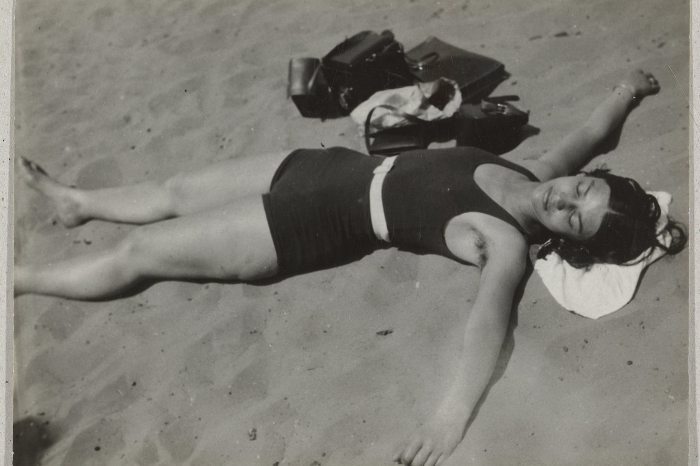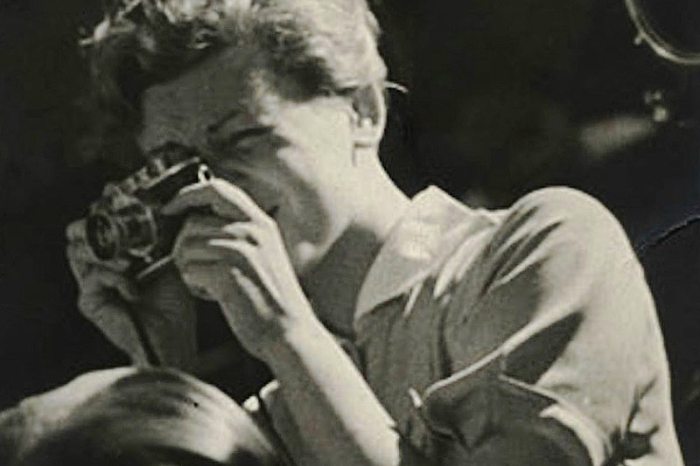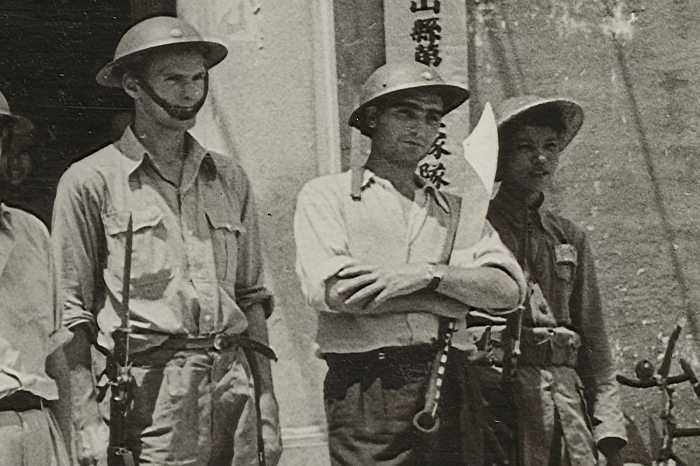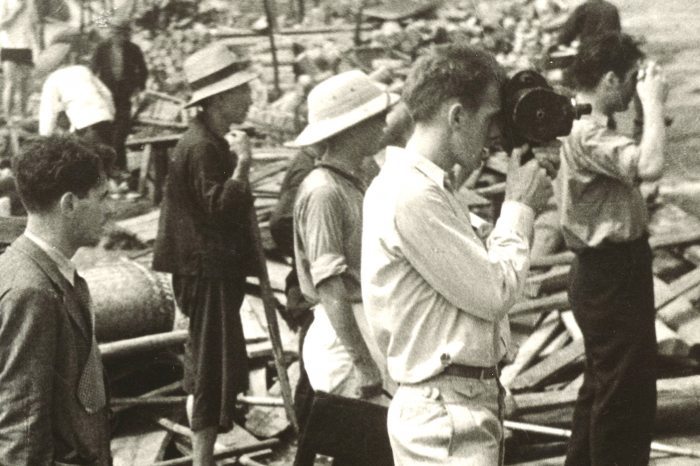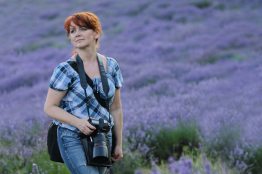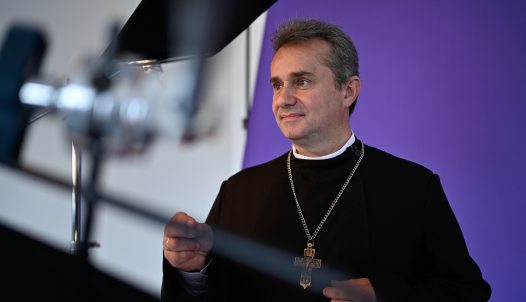Robert Capa, the world's best-known war photographer had a passionate desire for peace
"It's not enough to have talent, you also have to be Hungarian", said Robert Capa, the greatest war reporter in the history of photography, born as Endre Ernő Friedmann in Budapest. During his daring and adventurous life, he captured five wars from the firing line, and then, fulfilling his own destiny, lost his life on the battlefield.
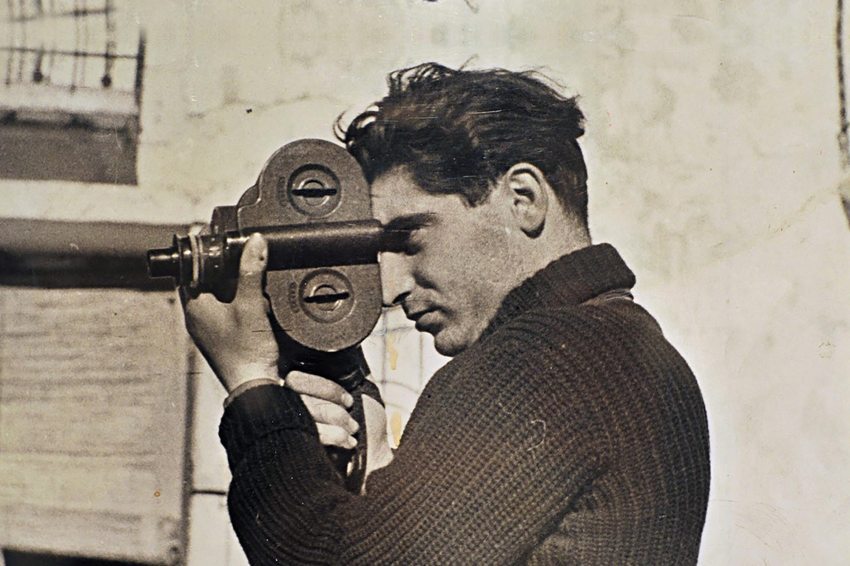
Lost his love in the war
The Nobel Prize winner for Literature, John Steinbeck, said of him, "He could photograph motion and gaiety and heartbreak. He could photograph thought." But Capa was a friend not only of this literary genius but also of another one, Ernest Hemingway, as well as Pablo Picasso and Ingrid Bergman was his love. He managed to condense an incredible amount of human encounters, inhuman moments, creativity, emotion, and drama into 41 years, and he did not take them with him to his grave but left them to posterity in the photographs he made.
Born in 1913, his father was a dressmaker, he wanted to become a writer, but he was captivated by photography and eventually stayed with that. In fact, it was his first love that laid the foundations for his "eternal love", as he began to learn his photography following Éva Besnyő, who would later become an internationally renowned photographer.
Éva later recalled that she also played a big role in choosing the legendary artist's name: "We called him Cápa („Shark”) at home and his brother Kornél Krokodil (“Crocodile”)" she said - but others say otherwise.
Endre moved to Germany in 1931 and enrolled at the German Political College in Berlin to study journalism. The background to this was that he had sympathized with the illegal Communist Party in Hungary, which had led to trouble with the police, so his parents thought it better to continue his studies abroad. Berlin in the 1930s, however, did not bode well for him as a Jew, although he did achieve his first successes: he joined the Dephot photo agency and produced a memorable series of photographs of Trotsky's visit to Denmark.
In 1933 he went to Vienna, then temporarily back to Pest, where he worked in a photographer's shop, taking photographs for tourist publications. His next stop was Paris, where he worked for photo magazines and met Gerda Taro, who defined his life in the future.
They lived in the artistic and bustling Montparnasse district, and it was then that the name Robert Capa was born: the most likely version is that Gerda had the idea, based on the names of Endre's photographic idols Robert Taylor and Frank Capra. A fictional character was also invented behind the new name inspired by the first name of one of them and the surname of the other: Capa was a wealthy American photographer who sold his own work at high prices.
In 1936, a tragedy brought a new turn in Capa's - no longer Endre - life: while working for Vu magazine, he and his partner travelled to Spain with the assignment to take a series of photographs of the civil war, but Gerda was run over and killed by a tank. Before the sad incident, Capa had made his later world-famous photograph, The Falling Soldier, which shows a man collapsing at the moment of his death.
Some accused him of the photograph being staged - successful people had their enviers back then too.
He became a legend in photography as an American
Of course, Capa had a tendency to add some colour to the stories afterward, not in a photographic sense, but to make what he experienced on the spot sound more thrilling. His creativity was evident in this, too. Gerda's death broke his heart, and after a detour to the Far East - the Japanese-Chinese war - he moved to America at the invitation of Life magazine.
His mother and younger brother were already living there, but his friendship with Hemingway may have played a part in his being accepted to the US coming from a country at war with the US during the Second World War. The two became lifelong friends during the Spanish Civil War, and Hemingway used Capa's experiences at the Navacerrada Pass to write his iconic work For Whom the Bell Tolls. Capa later made a famous series of pictures of Hemingway's family.
The photographer was the only one arriving from an enemy country who became accredited by the US Army, so he was able to take photographs from the front line during the war. In his autobiography, he writes that he was asked by Collier's American magazine, which wanted him to report from England, to leave New York despite the laws forbidding him to do so. "I only had a nickel in my pocket. I decided to flip it. If I had a head, I'd go for it and even kill to get to England," he recalled the moment. It was tails, but Capa, who fancied himself a gambler, set off.
While drinking some alcohol in a bar in Washington, the British press attaché found the legal loophole that allowed him to board a boat. They let him do it because he was already Picture Post's picture editor, "the world's greatest war photographer", as was written under one of his published pictures. The photographer earned this accolade by documenting the human face of the battle rather than the bloody action. Capa's lens was always looking for the eyes and glances of the participants, for their momentary feelings and dramas. He did so when he was reporting from North Africa as a war correspondent for the Allies, or even when he was photographing from the air as the paratroopers landed in Sicily, falling with the ejected soldiers.
He even helped untangle the parachute cord of one of them, saving his life. He developed the photos at the light of a cigarette because for him there was no such thing as impossible.
He photographed a famous series of funerals of teenage partisans killed in guerrilla fights against the Germans in Naples. He photographed the D-Day landing from close quarters by hiding behind a wrecked military boat in the water and then swimming to shore with his camera among the bodies. From there, he had to take a boat, which he used to get to the base ship, on the bloody water, amid the feathers of the shot soldiers' jackets flying in the air. On the ship, he photographed the stretchers and then fainted. The development of the films was botched in the lab and most of the pictures were destroyed.
He himself considered the photograph of his life to be the one he took in Chartres in August 1944, entitled The Shaved Woman of Chartres of a French woman, with her hair shaved off marching among the mockers with a baby born to a German soldier in her arms. But Capa was everywhere during the years of the war, from bombed-out London to liberated Paris and falling Berlin. After the war, he became an American citizen.
He seduced an actress, but his work became his fate
In 1945, he returned to Paris, where he fell in love with Swedish actress Ingrid Bergman, whom he followed to Hollywood, where they lived together for two years. The actress was married and was ready to leave her husband for Capa, but the photographer refused to commit. Instead, in 1947, he and his fellow photographers, such greats as Henri Cartier-Bresson and William Vandivert, founded Magnum Photos, named after the champagne they drank when they founded it. It was the first cooperative agency of international freelance photographers, and Capa was finally able to photograph civilian life.
He and John Steinbeck were the first American correspondents to travel to the Soviet Union beyond the Iron Curtain, and Steinbeck published a book about the trip, entitled A Russian Journal, richly illustrated with Capa's photographs.
The photographer then took thousands of pictures of the everyday life of the Russian people, with whom he also felt a kind of spiritual community, and because he made no secret of this, he was put on the US list of "suspected communists".
In 1948, Capa spent six weeks in Hungary, where he captured everyday life in Budapest and in the country's rural towns as the country awoke from the war and was under communist takeover. He was present during the Israeli War of Independence and saw Ben Gurion proclaim the founding of Israel. After that, he led a more peaceful life, photographing European ski resorts, beaches, and horse racing for Holiday magazine, and also doing a series on Picasso and his family in France.
But his peace soon ended: his American passport was finally revoked on the grounds that he was a communist, and he tried to defend himself from Paris through his lawyer, while all his money ran out. In vain, he said, “War is like an aging actress - more and more dangerous and less and less photogenic”, he had to undertake another mission to make a living. In 1954, at the age of 41, he was commissioned by a Japanese publisher to travel to the country to photograph children and was asked by Life magazine to cover the French colonial war while he was there. He didn't want to do that, he had a bad feeling about it.
In Hanoi, Vietnam, on 25 May, he boarded a military jeep and, after photographing soldiers preparing to deploy across the Red River, stepped on a landmine on the battlefield and was so badly injured that by the time he was found, he was beyond help. His own belief was that "if your pictures aren’t good enough, you’re not close enough", but in this case, he was not only close enough to death, it had taken him.
His friend, the editor John G. Morris, said of him that he had always "believed in the brotherhood of man, and had a passionate desire for peace". And on the second day after his funeral, the photographer André Kertész dedicated a picture of a New York City twilight from a window to his memory, Homage to Robert Capa.
Literature:
- https://www.theartstory.org/artist/capa-robert/
- https://totallyhistory.com/robert-capa/
- https://www.famousphotographers.net/robert-capa
- https://www.britannica.com/biography/Robert-Capa
- https://www.newworldencyclopedia.org/entry/Robert_Capa
- https://www.ujakropolisz.hu/cikk/robert-capa-haditudositas-emberseg-nagykovete
